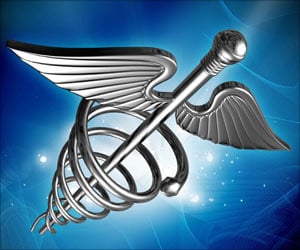Making tissues ischemic can be highly damaging, it is what causes permanent damage to the heart after a heart attack, but elephant seals appear to resist this damage.

‘Marine mammals and elephant seals in particular, are one of the only models where carbon monoxide at the elevated levels are considered therapeutic.’





While it is deadly to humans at high levels, carbon monoxide in moderate doses has been found to help reduce inflammation and tissue damage from being exposed to conditions such as low oxygen or reduced blood flow. Ongoing clinical trials are testing its therapeutic potential for patients with lung injuries, the infection complication known as sepsis and other conditions. "We're excited about this research because marine mammals, and elephant seals in particular, are one of the only models where we see carbon monoxide at the elevated levels which are considered therapeutic," said Michael Tift, a doctoral candidate at Scripps Institution of Oceanography, University of California, San Diego, who conducted the research. "We think the elephant seal has, over millions of years of evolution, potentially figured out how to manage this carbon monoxide system in a way that's beneficial for the animal."
"If we can understand what levels of carbon monoxide offer the most benefit to the animal, and how the animals maintain these therapeutic levels, there is hope that we can use this information to assist in treating certain injuries and pathologies," said Tift. Tift will present this research at the American Physiological Society Annual Meeting during Experimental Biology 2016.
The researchers tested carbon monoxide levels in the blood and exhaled breath of nine killer whales, eight northern elephant seals, seven bottlenose dolphins, five beluga whales, three short finned pilot whales and one Hawaiian monk seal. They found that most marine mammals exhale carbon monoxide at around 6 parts-per-million-comparable to the elevated carbon monoxide level exhaled by a person who smokes several packs of cigarettes per day-or higher, and that the elephant seal exhales carbon monoxide at 40 parts per million. The researchers also found that these levels can be equally as high in the blood of the animals.
Marine mammals are a good experimental model because of their relatively abundant red blood cells and high levels of a blood protein known as hemoglobin. In people as well as marine mammals, carbon monoxide is produced as a byproduct of the red blood cell life cycle. When these cells break down after a typical lifespan of less than four months, hemoglobin is released into circulation. A component of hemoglobin known as heme is then further broken down by enzymes to create carbon monoxide, which makes its way to the lungs and is ultimately exhaled.
Advertisement
In addition to having one of the highest concentrations of red blood cells and hemoglobin of any mammal ever tested, elephant seals are known to regularly experience a phenomenon known as ischemia-reperfusion during long dives and while sleeping on land. Ischemia is when blood flow to tissues is reduced and reperfusion is when blood flow returns to those tissues. Diving animals regularly reduce blood flow to specific tissues while holding their breath in order to preserve oxygenated blood for the brain and heart. In people, making tissues ischemic can be highly damaging-it is what causes permanent damage to the heart after a heart attack, for example-but elephant seals appear to resist this damage, and the researcher thinks carbon monoxide could help explain why.
Advertisement
As a caveat, Tift said that although the study focuses on potential benefits of moderate levels of carbon monoxide, it does not suggest that smoking or exposure to other sources of combustion, which elevates carbon monoxide exposure, is in any way healthy. Cigarette smoke includes many extremely toxic chemical components and any benefit from moderate levels of carbon monoxide would not outweigh the harms from smoking.
Source-Newswise










